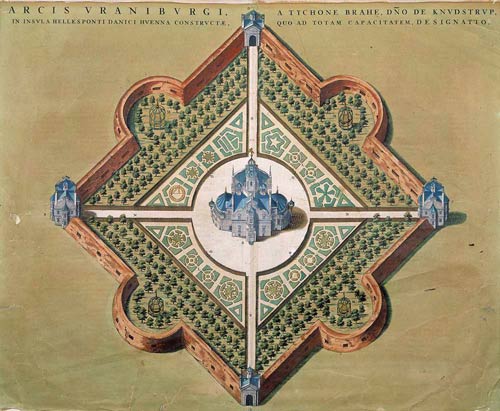September 30th, 2007
In Athens, Greece not far from the famed Parthenon stands a structure known as the “Tower of the Winds.” Constructed around 50 BCE, by the Greek architect and astronomer Andronikos of Kyrrhos, it combined 9 sundials, a complicated internal water clock, and a weathervane many historians cite as the first ever built. The octagonal, white marble tower stands over 46 feet high with a diameter of about 26 feet, resting on a base of three steps.
The Tower was originally topped by a revolving bronze weather vane which we know from historical records to have been of the sea god Triton, who had the head and torso of a man and the tail of a fish. A pointed wand in his hand indicated the direction from which the wind was blowing. More info on wikipedia and the weather journal.
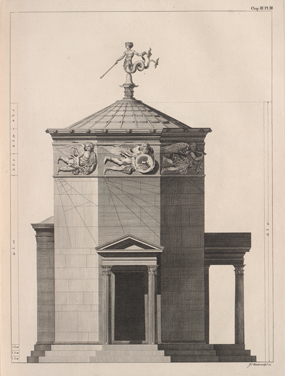
September 23rd, 2007
On the equinox, the path of the tip of a sundial shadow is a straight line. Monumental sundials are sometimes positioned such that this line points to key landscape features–in the Augustus Sundial in Rome (previous post here), the obelisk-gnomon was positioned so that on the equinox this line intersected Augustus’s mausoleum.
The Long Island City Sundial is positioned such that this equinox line intersects the United Nations, across the river in Manhattan, at about 8:00am.

September 22nd, 2007
“The Castle” is a step-pyramid in the center of the Chichen Itza archaeological site in Yucatan, Mexico. During the equinoxes at about 3 P.M. sunlight bathes the western balustrade of the pyramid’s main stairway. This causes seven isosceles triangles to form imitating the body of a serpent 37 yards long that creeps downwards until it joins the huge serpent’s head carved in stone at the bottom of the North stairway. This has been called “the symbolic descent of Kukulcan” (the feathered serpent), and it is believed it could have been connected with agricultural rituals. Check here for a 360-degree view from the top of the pyramid.
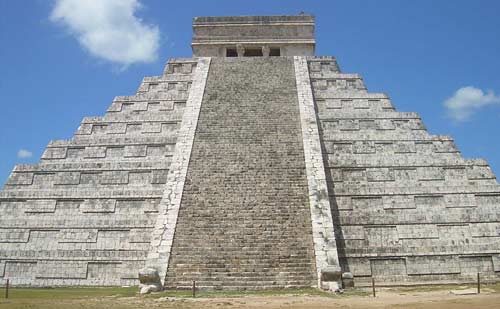
September 21st, 2007
Loughcrew in one of many examples of very, very old structures that are built to align with sunrise or sunset of the solstices or equinoxes during the year. At dawn on the equinox (which this year is on Sept 23) the sun shines through a passageway under the cairn-mound and onto an intricately carved back stone.

September 19th, 2007
The Tower of Radkan is a solar observatory built in 1261AD by Khajeh Nasir Tusi’s group in Iran. Extensive information on how it works is available at www.jamejamshid.com.
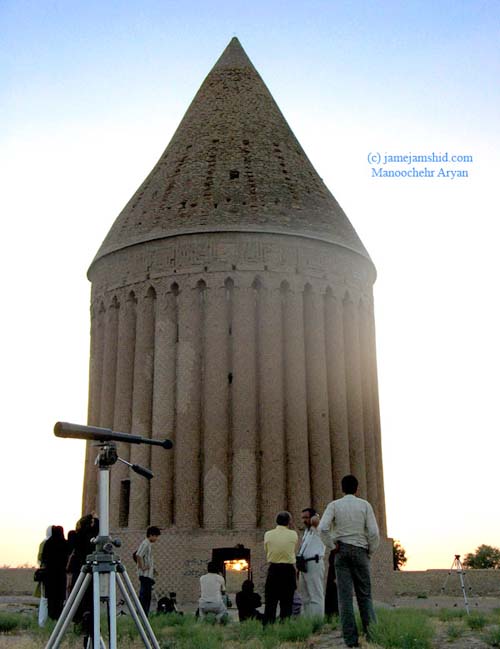
September 17th, 2007
Between 1727 and 1734 Maharajah Jai Singh II of Jaipur constructed five astronomical observatories in west central India. The observatories, or “Jantar Mantars”, incorporate multiple buildings of unique form, each with a specialized function for astronomical measurement, and which are fantastic sculptures in their own right. Visit the extensive documentary project initiated by Barry Perlus at Cornell U. for excellent interactive panoramic ‘VR’ photos, time lapse sequences, 3D models, ‘spherical rendering’ photographs, and lots of other research.
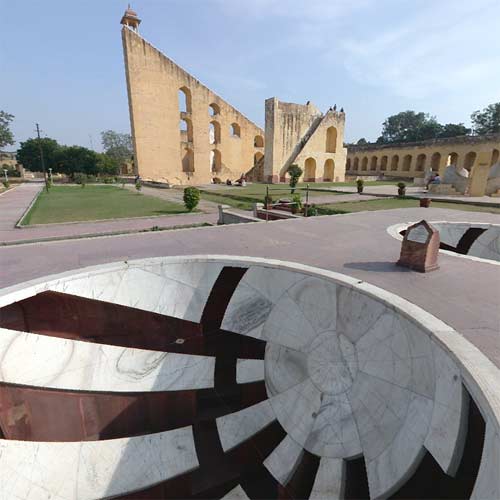
[photo-Perlus, capture from VR photo ‘Jai Prakash’]
September 12th, 2007
Uraniborg proved drafty, which disturbed instrument accuracy, and so Tycho Brahe designed and built a largely underground observatory next door to Uraniborg in 1584.
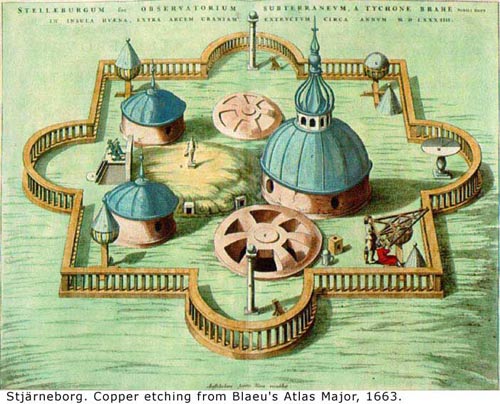
Stjerneborg now-ish:
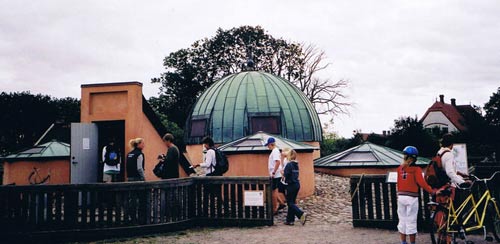
More info: www.tychobrahe.com
September 11th, 2007
Operated by Tycho Brahe in the late 1500s, Uraniborg was the first building ever designed with astronomical observations as its primary design criteria. The towers and balconies were to serve as instrument platforms, and the rooms in the main building were to house Tycho and his family, visiting astronomers, visiting royalty, and students. The alchemical laboratory was in the basement. The orientation of the building was chosen for maximum coverage of the sky with the instruments. Uraniborg was located in the very middle of large walled an intricate garden–In addition to being decorative, the gardens also supplied herbs for the Tycho’s medicinal chemistry experiments. Note sundial in garden, left of castle. More info.
